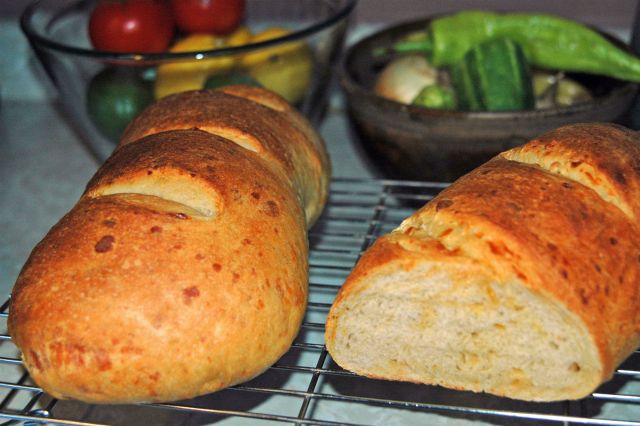
Gluten-Free Sourdough Loaf
Hi there
I have recently become very interested in Sourdough baking, and, being Coeliac, need to make gluten free bread. I have evolved the recipe below - the dough proofs really well and the taste is great. The only problem is that the inside of the bread has a sort of uncooked quality about it every time. It is fine when well-toasted, but not really edible as untoasted bread - it is quite moist and a little sticky. I thought this might have something to do with the cooking time, but I increased this significantly - and tried it at both higher and lower temperatures, and it didn't solve the problem. I substituted brown rice flour for some of the sorghum flour last time, hoping that this would make it drier inside, but it made no difference.
Does anyone have any ideas what I might be doing wrong? The recipe is below.
Ingredients:
200g Sorghum flour
100g ground Quinoa
100g Tapioca flour
100g Potato starch
75g Chestnut flour
25g ground Hemp seeds
25g ground Flax seeds
120g starter
10g salt
1 tblspn live yoghurt
¼ tblspn baking soda
500ml water (around 30 degrees)
Directions:
1 - Put starter and 300ml of water in a large bowl
2 – Stir in ground quinoa, hemp and flax, chestnut flour and half of the sorghum flour (may need to add a little more water if not enough)
3 – Add the live yoghurt
4 – Leave for a few hours in a warm place.
5 – When risen, remove a small amount to use as the basis for the next starter.
6 – Add the rest of the water, and stir in all the remaining ingredients (may need to add a little more water if this is not enough).
7 – Put in a bread tin and leave to rise for a few hours.
8 – Cook at 180 degrees for around 40 minutes. Remove from tin, and cook for a further 10-15 minutes.
9 – Leave for an hour or so, then eat.


















